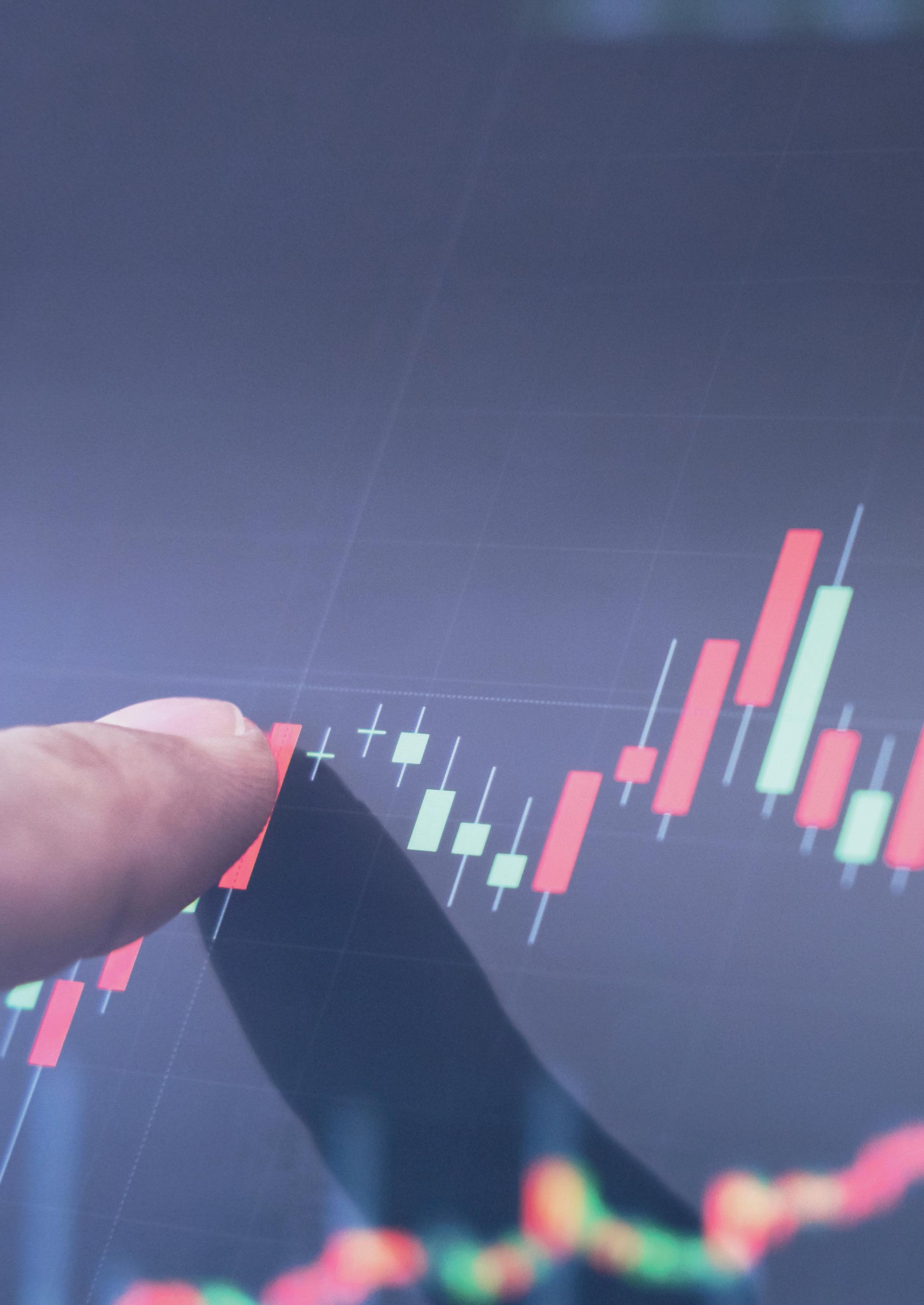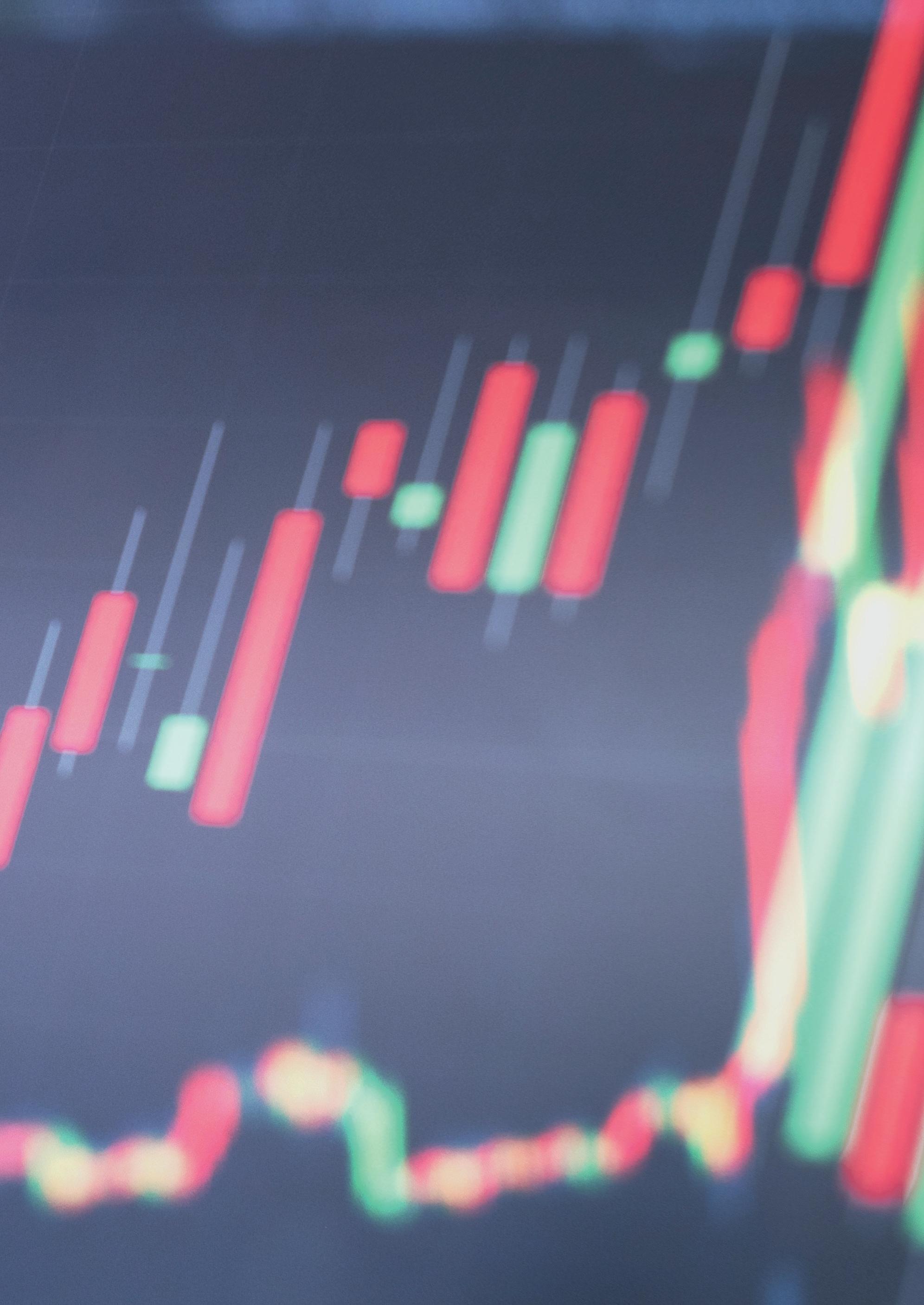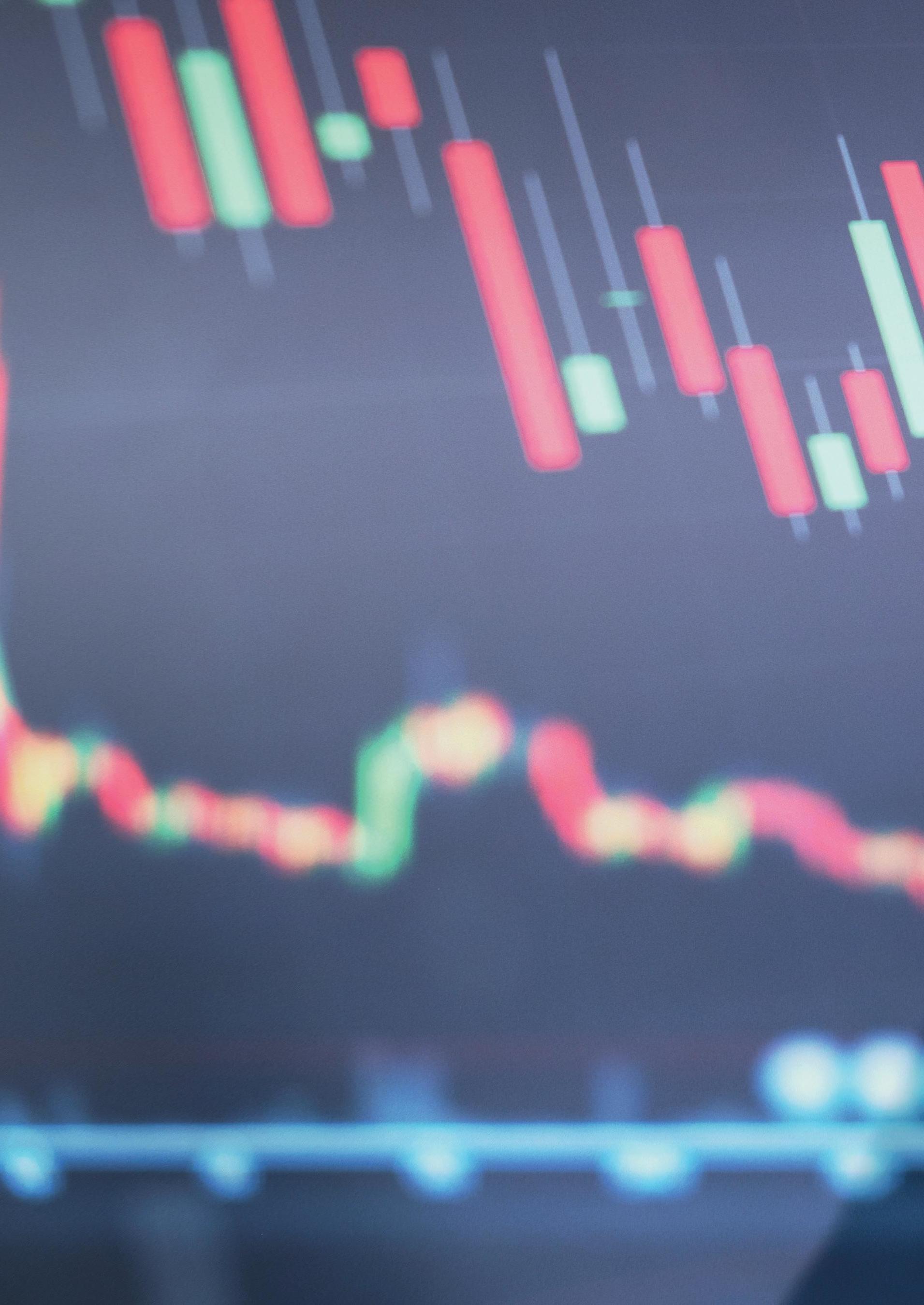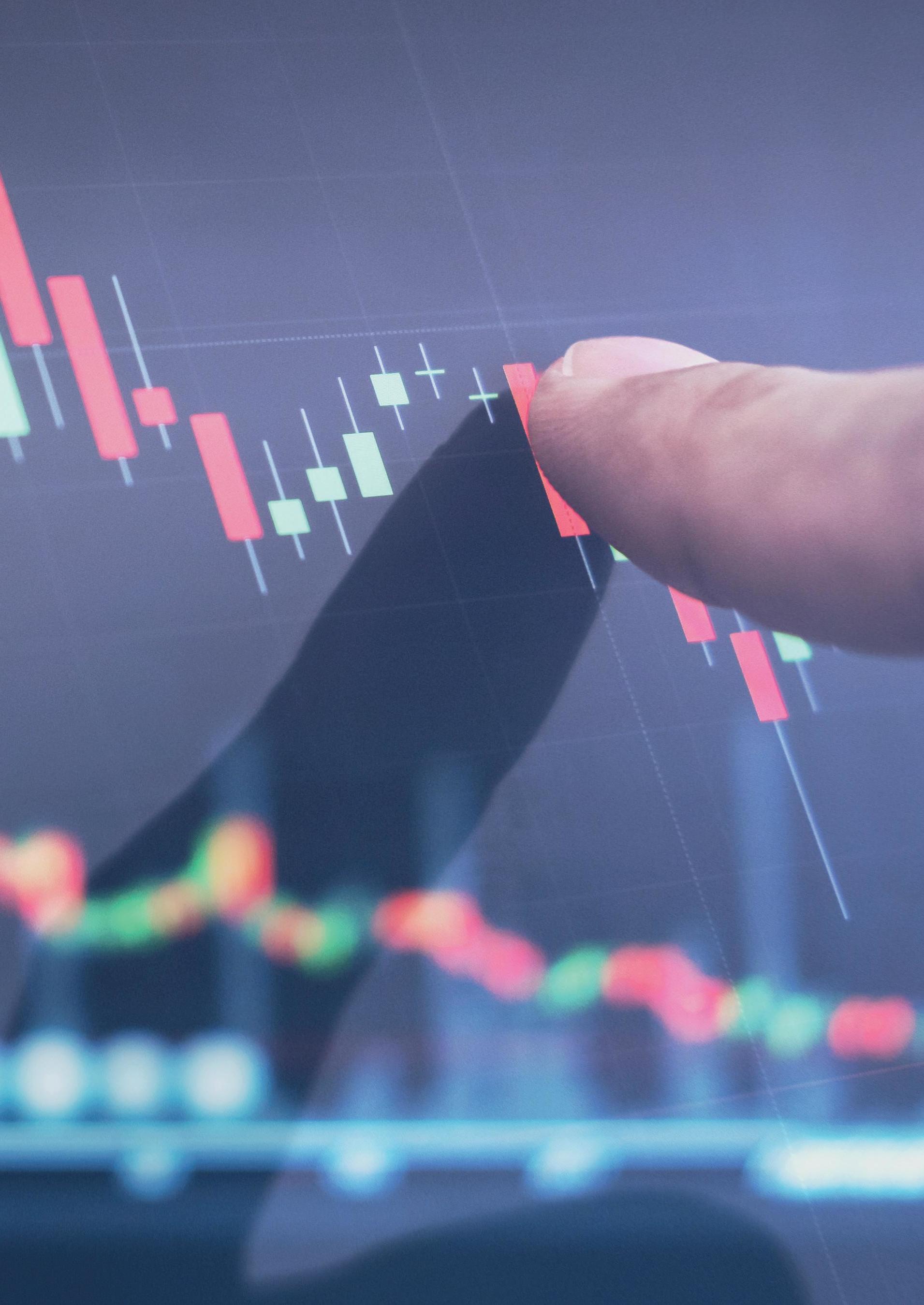
10 minute read
The state of markets and why we shouldn’t fear corrections
The state of markets and why we shouldn’t
fear corrections
Advertisement
Wealth DFM’s Sue Whitbread talks to Gerald Moser, Chief Market Strategist at Barclays Private Bank, about why he believes corrections are healthy and investing in quality businesses lies at the heart of a sound investment strategy.
SW: When it comes to investment, many portfolio managers stick with the traditional 60/40 investment strategy – where 60% is typically invested in higher risk/higher reward areas and 40% in lower risk assets? What’s your view on this?
GM: For many investors, I think that diversifying away from the typical 60/40 strategy makes sense at the moment. For those who do follow it, based on historical evidence, I can see why they do it. Over the past twenty years, the performance has been really strong. Equity markets have performed well and we’ve seen one of the strongest rallies ever in bond markets as interest rates have fallen to such low levels. We’ve still seen interesting yield addition to a portfolio too. Historically, the 60/40 strategy has been a powerful tool in investing and diversifying. We are now reaching a point where we struggle to see where capital appreciation might come from within government bonds – with global base rates at or close to zero. Yields too are low. Even at current levels, you’re not compensated for inflation so you’re losing money. Looking ahead, it’s difficult to see what the next five years will bring in terms of diversification and income within a portfolio from the sector. But there are other interesting opportunities – mostly in the alternatives space – including private markets, hedge funds or gold.
SW: Let’s move on to talk more about the investment outlook. Are you bullish about things or do you suspect a bit of a correction might be coming down the line in the next couple of months? If so, what do you see as the drivers behind that?
GM: It does rather depend on the timescale you look at. Returns are likely to be lower over the next five years. This is a result of the high valuations we are seeing across almost every asset class – equity, fixed income etc. Therefore, expectations should be lower, in terms of where we are now. That doesn’t mean that there aren’t opportunities though. Even where index levels are high,
there are still opportunities for growth at stock level within that. Some companies will be growing. There are some global trends such as fighting climate change, SMART cities, connectivities etc. where there are good opportunities over the longer term. In the short term I think there is risk of a correction but it is almost impossible to forecast.

SW: Have previous market sell-offs provided you with any particular wisdom on this front?
GM: Even with hindsight you don’t necessarily identify the trigger for a particular correction. A market falls and the spiral leads downwards as people sell. It’s quite difficult to identify the actual catalyst for that fall at the time it happens. If interest rates start rising, that is a worry for equity valuations of course.
But corrections are also healthy. It is very normal in a bull market to see a correction once a year of between 5 and 10%. This isn’t something we should be afraid of. For example in 2020, markets hit a trough in April and recovered 70/80% from there depending on which market you look at. If you look at the years after the two previous big recessions – after the tech bubble in 2003 and again in 2009, in each case the bottom was in March. Then there was a rally until around January/ February the following year, with gains around 50-70%. Which is where we are right now. After that, we typically saw two corrections- in both 2004 and 2010.
I think it makes sense. If you think of where we are now, last April we started to think about the possibility of vaccines allowing countries to unlock. We now see that light at the end of the tunnel.
Once we start to see a recovery we think what next? Then we begin to see yields starting to rise – as we are doing at the moment and people asking do I have enough opportunity on the growth side to continue investing? The corrections we saw in 2004 and 2010 were markets questioning whether we can continue to rally at the pace we’ve seen for the past twelve months. I think it’s healthy and that it’s something we shouldn’t be afraid of.
SW: Drilling down into matters of asset allocation, do you see value in value? Is there more froth in growth stocks? Or do you feel it’s more about diversification and a combination of approaches focused on the quality of the individual businesses in which you invest?
GM: I believe that the quality of the business is the most important factor here. Value vs growth is a raging debate at the moment of course, but I think there’s some misconception about what value actually is.
How do you value a company? If you look at the different index providers, MSCI value criteria differs from FTSE for example. The way they are created is quite different. Some will focus on price/earnings, or price/book, some on dividend yield and some will split the index composition into two, so you are either value or growth. Some will be more specific. The point is that there is not a clear definition on how to look at value.

Value vs growth is a raging debate at the moment of course, but I think there’s some misconception about what value actually is The point is that we need to get growth – but growth with quality
When you look at valuation, we could look at the example of energy companies. A lot of these are trading on very low P/E ratios at the moment. But we have to question the earnings that you use here. If you try to assess the value of the company you will probably do a discounted cash flow analysis over the next 20 years. The challenge for an energy company is that they might have oil in the ground but they might never be able to extract it because the cost on the carbon side – so called “stranded assets”. So how do you value that oil that might never be extracted? This is something that the market is reflecting on. If you have companies which appear very cheap, the first question is to ask – why is that? Is there something we’re not reflecting properly within its valuation? Overall, valuation is difficult to assess. The rotation we’re seeing at the moment is a reflection of that froth in growth stocks we spoke of earlier. However if we just take those two options I’d have a preference towards growth. The important thing is the quality of the business. It’s not just about buying growth at any cost it’s about buying a business. Valuation is stretched.
Over the last ten years, depending on which market we look at, up to 100% of the return in Europe for example, has been delivered through valuation expansion. It was not through earnings growth. It was because central banks were pumping liquidity into the market and that pushed the valuation to the levels we’re at today. In the US it’s probably 90% explained by valuation. Over the next few years, we can’t rely on valuation expansion anymore. We’re already fairly stretched. As long as central banks support markets with liquidity I don’t think valuations have to come down. We have to live with those valuations. It’s not comfortable as an investor to buy equities at current levels, but as long as the central banks are there and supportive, valuations are likely to stay elevated.
The point is that we need to get growth – but growth with quality. You want companies with strong cash flow, that
have capacity to generate a good return on cash invested as that means they have an IRR that allows them to grow. They’re not trying to engineer their return by share buybacks, distributing dividends etc. It’s growth with quality and a strong balance sheet is something which I think, considering that over the next few years we’ll see yields going up, will be important from a resilience point of view when it comes to equity investing.

SW: And finally, it would be great to get your views on ESG – or sustainable investing – and how much of a driver this is becoming at the moment?
GM: Responsible investing is different to sustainability. Responsible investing is making sure that as an investor you would pay duty to people who are giving you money and that you vote when it comes to important resolutions at the AGM for example. But sustainability is more long term and can be implemented through responsibility. You can define every company through an ESG filter. Is it a high or low compliance business? Everyone is aware of the “E”element – environment. There’s much talk around climate change and much scrutiny on company’s carbon footprint as they disclose more and more data on that front. I believe that with regard to the “S” element – society – the pandemic
has highlighted the importance of the people working for you. Gender inequality is also extremely relevant. Finally “G” – or governance – this is the one which from a resilience perspective is probably the most important. If you think of recent accounting scandals, these might have been avoided if there was greater scrutiny on governance.
ESG overall will be one of the first filters you will apply to any investment decision going forward. Other filters will be earnings growth, valuation, dividend yield etc. In the past you’d do some screens and maybe some qualitative work around the stocks which would have past the initial screening. Going forwards, ESG is going to be the first step before you decide to go deeper into company analysis when deciding what you want to include within your portfolio.
ABOUT GERALD MOSER
Gerald is Chief Market Strategist at Barclays Private Bank. He is responsible for Barclays Private Bank’s investment views. With his team, he defines their advisory investment views through thematic and opportunistic investment ideas and also contributes inputs to the discretionary process. Before he joined Barclays, he spent several years at Credit Suisse in its Wealth Management section and almosta decade in the Global Investment Research division at Goldman Sachs.
There are some Corporate Bond Profits you can only get to if you’re light and agile.
CORPORATE Bond Country is a neck of the woods where it pays to be lean and focussed. Nimble enough to nab the hard-toreach Profits, Profits that may have eluded others. That’s why our specialists, Stephen Snowden and Grace Le, hunt as part of a compact, tight-knit team. Always keeping a keen eye on liquidity, to ensure they can rapidly branch out in new directions whenever opportunities arise. You see, deftness and agility are called for, when you’re looking to climb the Corporate Bond tree.

Performance (%) Since launch†
1 year
6 months
Artemis Corporate Bond Fund 13.8 9.7 4.9 Markit iBoxx Sterling Coll&Cor TR 7.9 4.4 2.3
Sector Average 7.5 4.5 2.4
Position in sector 2/88 2/88 3/88
Quartile 1 1 1
Past performance is not a guide to the future. Source: Lipper Limited, class I GBP accumulation units from †30 October 2019 to 31 January 2021. All figures show total returns with dividends and/or income reinvested, net of all charges. Performance does not take account of any costs incurred when investors buy or sell the fund. This class may have charges or a hedging approach different from those in the IA £ Corporate Bond sector benchmark.
Capital at risk









